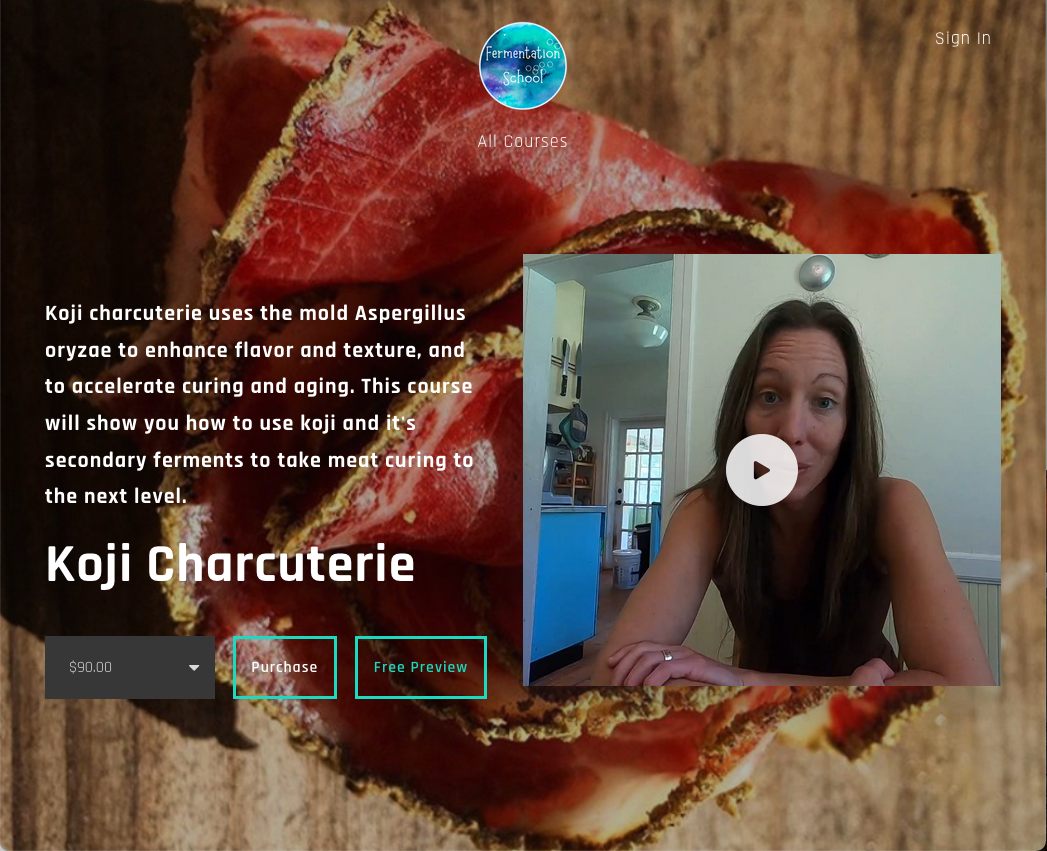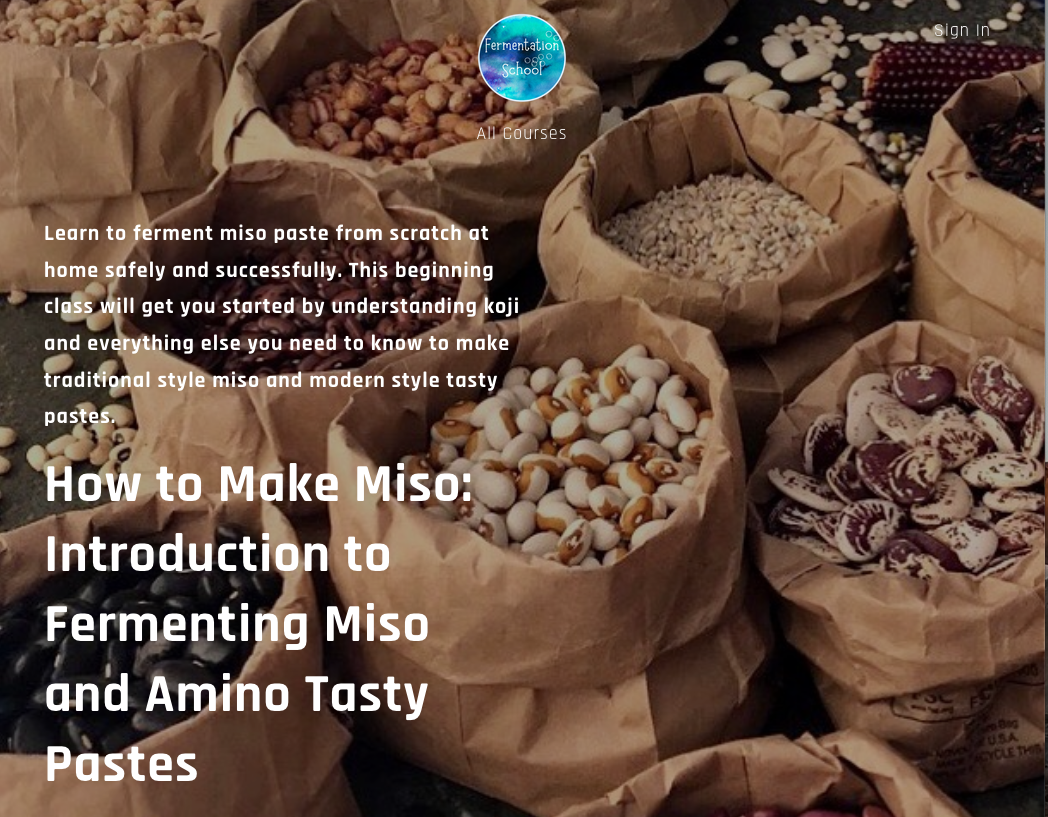In this 45-minute talk at the 2019 Boston Fermentation Festival Kirsten gives an overview of Aspergillus Oryzae, also known as koji, the mold with superpowers. In this introduction to koji will learn how koji works by creating the enzymes that infuse our food with flavor
“Once Koji grabs your soul, there is no turning back.
- Jeremy Umansky, Larder, Cleveland”
What is Koji?
Koji is a filamentous mold that grows on the surface of its host, exuding powerful enzymes to break down complex molecules. As you can see in the picture that follows the Koji fungus is beautiful. Here you can see it takes hold of the soybeans and is spreading across the cracked wheat. This surface mold is secreting powerful enzymes to break down large starch, carbohydrate, protein, and lipid molecules into their smaller and more flavorful component parts.
How does Koji Work?
In a word, enzymes! Enzymes snip apart large molecules into smaller pieces.
Proteins become Aminos & Peptides
Carbohydrates become simpler sugars
Fats become fatty acids
The ordinary becomes amplified; the one-dimensional becomes multi-dimensional!
Learn to speak Koji
We know, its can get confusing, especially if all of this fungal ferment world is new to you. Here is a simple koji definition guide that you can save a link to and pop open a tab when you are reading that latest 7 things that blah blah blah and they mention a Koji term. You will discover they are not always using them correctly…
koji
Koji is the Japanese word widely used throughout much of the world that refers to Koji that has been grown on rice. Some other terms you will see that mean the same thing are kome-koji, koji rice, and malted koji.
Koji-kin
So if Koji refers to the fungus that has grown on rice, Koji-Kin refers to the mold itself, regardless of the substrate, be it rice or anything else.
tane koji
Tane Koji takes us to the source of the above two terms, the spores themselves that come in the starter you order online.
mycelium
Looking closely at that picture above and thinking about our Koji-kin fungus growing away in your incubator the fungus mycelium is the vegetative part of the fungus, made up of filamentous ‘hypha’ and is the part we mostly see with our eyes.
Hypha
Each filament of the Mycelium, the plural for these is Hyphae. You could think of these as the roots of a plant you are familiar with.
koji
People + Koji = Tasty Foods
You have hopefully learned a little more about what koji is and how it works in this post. If you are ready to learn more and use koji to make something we have two great classes to suggest in The Fermentation School.







